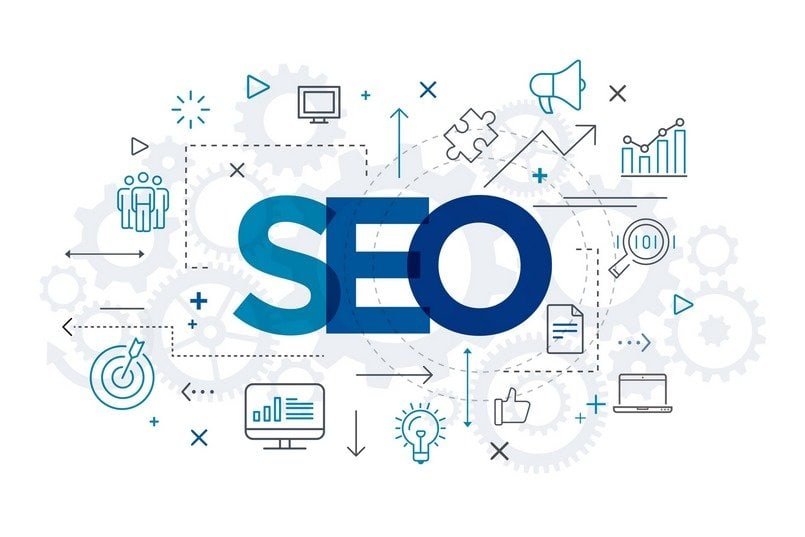What’s up! Want to take your website traffic to a whole new level? Not the usual, overdone tactics that everyone talks about. With my special super-high-level strategies for traffic optimisation? Then you’ve come to the right place. Now, sit back, relax, and get ready to learn some heavy-hitting advanced tactics for getting more traffic to your website.
Leveraging AI and Machine Learning for Smarter Targeting
The recent technological advancement is making AI and machine learning the game-changers of digital marketing.
H3: Predictive Analytics for Enhanced User Engagement
You can use predictive analytics algorithms (i.e., AI) to forecast visitor behaviour based on past data. In other words, you can predict what your visitors are likely to want or do on your site. Combining tools, such as Google Analytics, with custom machine learning models, you can create experiences that engage and retain users. The main factor is data. The more well-suited the data, the more accurate your predictions and the more effective your personalisation will be.
Automating Content Delivery for Optimal Timing
However, machine learning can also be used not only to analyse data but also to automate and optimise when and how to present your content to your audience. Along these lines, email marketing platforms such as Mailchimp use machine learning to identify the most appropriate times to send an email to yield the highest open rates. They analyse which time an email is created incorporates the most significant propensity for open rates. Similarly, scheduling tools for social media such as Hootsuite and Buffer use machine learning to identify the best posting times for most engagement from a user’s social media population.

Advanced SEO Techniques: Going Beyond Keywords
SEO optimization is an important part of traffic optimisation, but it’s one part of a much bigger whole.
Utilizing Schema Markup to Enhance SERP Appearance
Schema markup (also called structured data) does away with the guesswork by directly communicating the context of your content to search engines, not just its content. This helps to improve your visibility in search results via rich snippets, which are 30% more click-through than standard listings. Sites that use schema markup typically report better click-through and organic search performance because they get greater visibility in listings.
Exploring the Power of Topic Clusters Instead of Single Keywords
Owners of websites need to know about SEO topic clusters. A topic cluster, rather than a specific keyword, is the starting point for optimising your content for search engines. A topic is an overarching area focused on, for example, ‘web design’. To bring relevance to this, the website must create actual content that explores the topic in more detail, such as ‘how to make your website mobile-friendly’, ‘Why use a design retainer?’, and so on, all focused on the main topic. As you create more related content and link to your originating page, it proves further to search engines that your site is an authority in web design. Tools such as SEMrush and Ahrefs can help you to spot potential topics and track the performance of your cluster.

Enhancing Site Performance and User Experience
Website performance is important because the traffic you manage to bring to your website depends on it.
Speed Optimization: A Necessity, Not a Luxury
Users get impatient with websites that load slowly, and search engines penalize them. Few users will stick around to wait for a site that is slow. Search engines, on the other hand, will actually demote sites that take a long time to load (just another consideration for search engine optimization—SEO). By implementing cutting-edge caching mechanisms, sizing images to reduce load, and minifying your code, you can get your site to load in a snap. Check out Google’s PageSpeed Insights for actionable improvement suggestions on how to speed up your website.
Responsive Design for Multi-Device Accessibility
These days it is a given that your site needs to look good on a desktop, tablet or smartphone: responsive design makes sure your site is user-friendly for any screen size, which translates directly into user-likeability and thence to SEO, since Google likes mobile friendliness.

Utilizing Data Analytics for Traffic Insights
Analytics can provide useful insights into the way your site visitors use it, which in turn can help with further optimisation.
Advanced Traffic Segmentation for Precise Intelligence
When you take the extra step to carve your traffic up into smaller populations of like-minded, presumably like-behaving individuals (segmented by behaviour, location, device type, and a host of other dimensions), you can then personalise your strategies at a deeper, more targeted level. Probably nobody has taken vertical segmentation capability as far (although you should soon be able to access some of these features in Google Analytics).
Leveraging Competitive Analysis for Strategic Insights
Knowing not only your traffic but your competitors’ too is essential. Tools such as Alexa or SimilarWeb will show you competitors’ traffic sources, keywords and audience affinity, indicating where there are often gaps in your strategy that you could improve or new market opportunities.
Conclusion
With this, you have covered some of the most innovative and advanced website traffic driving and optimising techniques used by professionals. The digital space changes, and to maintain or increase website traffic, it is important to be informed about the latest techniques and keep up with them. From AI to make your targeting smarter to digging deeper data to the concept of EGO optimising, each of the techniques offers some unique benefit to help you not only bring but also retain and convert your website’s traffic.
FAQs
How often should I revisit my SEO strategy? SEO is a continual process. You should review your strategy at least quarterly. Algorithm changes in search engines, movements in competitors, new SEO tactics—there are a lot of variables that can move the needle for your rankings and effectiveness.
Is AI difficult to integrate into my existing marketing tools? Sure, depending on what tools and platforms you are using right now. If you are using a modern marketing platform, it likely has AI baked into it along with many of its integrations. If you have developed some custom systems, it may take some additional tools or effort to integrate AI.
What is the first step in applying data analytics to optimize website traffic? First, make sure you’re collecting quality data. Implement tracking code (like from Google Analytics) correctly, clearly define tracking goals, and begin collecting data that’s easily divided into segments that can be analysed. Then use the insight you’ve gained to hone your marketing and optimisation.

